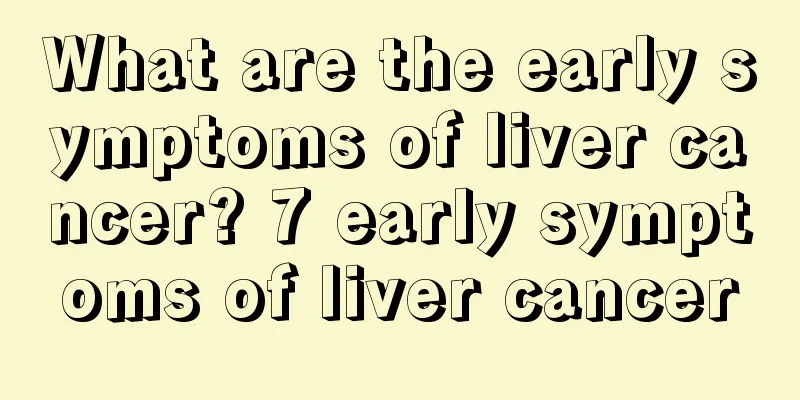How should liver cancer be diagnosed? Several common diagnostic methods for liver cancer

|
The main purpose of a blood test to diagnose liver cancer is to determine the concentration of the tumor marker alpha-fetoprotein. Liver cancer releases a chemical called alpha-fetoprotein that is present throughout pregnancy but declines after birth. If elevated serum alpha-fetoprotein levels are detected in adults, it can serve as a tumor marker for liver cancer. How is liver cancer diagnosed? 1. Physical Examination In liver cancer, the liver may be enlarged, and the doctor may be able to feel a tumor under the right costal arch. The surface of the liver is often nodular and irregular, which can also be felt. Often, the doctor will also tap the stomach with a finger to observe the abdomen for ascites. Ascites often occurs in severe liver disease and may be an indication of liver cancer. 2. Blood test If the presence of liver cancer is suspected, it is necessary to determine the level of alpha-fetoprotein, the so-called tumor marker for hepatocellular carcinoma. This means that alpha-fetoprotein is elevated in the blood in the most common liver cancer, hepatocellular carcinoma (HCC). Alpha-fetoprotein may also be elevated during cirrhosis, hepatitis or pregnancy. Therefore, there is no evidence of the presence of hepatocellular carcinoma. Therefore, it should always be interpreted in conjunction with further tests. In addition, the doctor checks various parameters of liver function that may be altered in liver cancer. These include liver enzymes, liver synthesis parameters including vitamin-dependent clotting factors, albumin, cholinesterase, and typically elevated bile values. If the suspicion of cancer cannot be eliminated or confirmed by these methods, further investigation is necessary. Computed tomography (CT), magnetic resonance imaging (MRI), and chest X-rays enable the treating physician to obtain more accurate information about the size of the tumor. Whether it is actually liver cancer, however, can only be determined conclusively by histological examination. For this purpose, the doctor removes a tissue sample from the liver and then performs a biopsy under a microscope. 3. Imaging Test Abdominal imaging such as CT scans, ultrasound, and MRI can produce detailed 3D images of the liver. With ultrasound, which usually does not cause pain, the tissue structure of the liver can be accurately imaged and even small tumors can be seen. If liver cancer is suspected, ultrasound can detect structural changes in the organ and possible tumors. To more accurately evaluate liver cancer, tissue samples are usually removed from the suspected area and examined under a microscope. Computed tomography (CT) or magnetic resonance imaging (MRI) also enables a more accurate graphical representation of the tumor as well as possible detection of secondary tumors in other organs and metastases of liver cancer. Liver cancer can also be diagnosed with a liver biopsy, which involves removing and testing a small portion of liver tissue to differentiate between benign and malignant tumors. |
Recommend
Wandering tingling pain on the body
Some patients often feel a tingling sensation in ...
What are the early symptoms of liver cancer? Here are six points
The onset of liver cancer is relatively hidden. T...
What medicine should I take for facial allergies?
Many friends suffer from skin allergies on their ...
What is the best way to remove neck wrinkles?
Neck wrinkles are actually a type of wrinkles tha...
What should I do if I still haven’t gotten pregnant after taking folic acid for half a year
For female friends who want to have a baby, it is...
How to open a hard-shell coconut
Coconut shells are relatively hard. If you don’t ...
What are the symptoms of testicular cancer? Here are six points to pay attention to
After suffering from testicular cancer, the affec...
Is Herceptin effective for targeted treatment of gastric cancer? It has a certain effect
Herceptin has a certain therapeutic effect on HER...
What is the best way to have black hair?
Having black and beautiful hair is something that...
There are 6 ways to quickly relieve spiciness
In daily life, many people prefer spicy taste, wh...
How to preserve bananas during transportation
The climate and environment in the north cannot b...
How to develop children's intelligence?
Parents all hope that their children have high in...
What are the plants that can effectively remove formaldehyde?
Speaking of formaldehyde, many people actually un...
Can I drink coconut juice during my period?
Menstruation is a very normal physiological react...
What is high uric acid? Come here to find out
In daily life, many people have heard of high uri...









